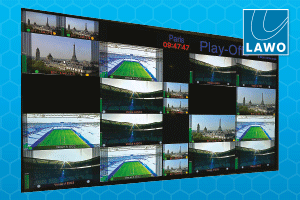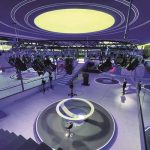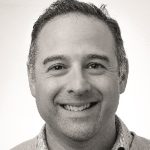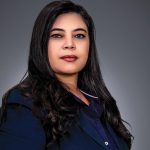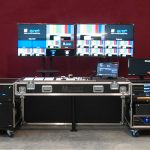Dubai-based filmmaker Amir Endalah recently shot a corporate video using the Sony PMW-F55. He shares his experience with BroadcastPro ME Amir Endalah is an avid filmmaker who likes to test different cameras. He recently shot in 4K using the Sony PMW-F55. This was his first experience in shooting with the F55 and Endalah was not […]
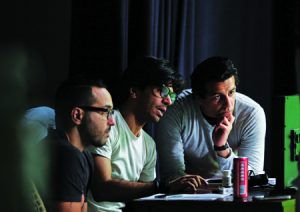
Dubai-based filmmaker Amir Endalah recently shot a corporate video using the Sony PMW-F55. He shares his experience with BroadcastPro ME
Amir Endalah is an avid filmmaker who likes to test different cameras. He recently shot in 4K using the Sony PMW-F55. This was his first experience in shooting with the F55 and Endalah was not disappointed.
I think no other camera would have done this job better. I was a bit cautious in the beginning, so I decided to do a dry run with the F55. I used it handheld and filmed outdoors as well as indoors and was quite amazed with the results, says
the filmmaker.
He adds that the F55 makes a good handheld camera because it is well balanced.
It is excellent for shooting documentaries and you can shoot on very low key in darker areas without compromising on the picture quality.
Endalah began working on the storyboard in September 2013, which was when Bensouda Consulting approached him to make a film that would help create a softer image of the bank for its employees. The objective of the film was to tell the banks story including its history and milestones in three minutes, while also tying it with the history and culture of
the UAE.
I was asked to do the entire film from the idea stage to post production. The clients brief was to show the banks human side. The idea of the project was to build a better relationship with the bank and its employees as if the bank was talking to the employees about its journey so far, explains Endalah.
Endalah created the storyboard based on that.
I decided to show the bank as an old man who narrated the entire experience and was interacting with a young couple who depicted the employees of the bank, he adds.
The film has six actors an old couple, a young couple and two children.
The film was shot over two days in AM Studio, in Al Quoz, Dubai, against a green screen with lots of layers added later
in post production.
AM Studio provided the infrastructural support for the film. We created a set with a scene of the desert entirely in the studio. Since the story involved time travel, I decided to show a touchscreen in the film, which was a challenge because the actors had to imagine something that did not exist. They had to act as if they were operating the touchscreen with nothing in front of them. It took us some time to get it right but we managed, eventually.
The initial idea was shot in March 2014.
Before the shoot, we recorded a VO (voice over) for the right pace. It was important for us to time the video and the task, explains Endalah.
The first draft of the edit was shot using the F55. The second draft had the visual effects. Endalah made four different versions of that and the whole process of interlacing the film with visual effects took a whole month and a half.
Building the elements required a lot of layers. The entire film had to be composed scene by scene and we shot it in RAW.
We had a fairly quick turnaround because of the cameras workflow. It simplified a lot of steps for us which helped us greatly in achieving our vision. Moreover, we had a lot of post work so the quality of the pics had to be flawless. The idea was to say more in less time and, I believe, this camera helped to accomplish that.
According to the filmmaker, Sony F55 is a very simple to use camera from a technical point of view. It offers a simple format and codec without compromising on the quality.
There were about 20-25 people on set at any given time, which meant that the space to work in was very limited.
The filmmaker emphasises that the situation called for the clever use of angles coupled with the right kind of lenses.
Sony has improved its viewfinder. I used Sony PL lenses and Angenieux lenses for some shots and both worked well, he explains.
According to the filmmaker, the F55 offers a wide range of latitude, which helps a lot in the production process as you dont necessarily have to change the lights for a simple step.
This proved to be a blessing in the small environment and limited timeframe that we had, as it helped save a lot of time. The14 stops in the F55 give you a lot of freedom. What we really wanted to achieve in post, we could actually shoot on the screens. We also did our grading in a relatively short time, he explains.
The ability of the camera to shoot simultaneously in RAW and MPEG 2 to create a proxy further simplified the editing process, according to Endalah.
You can record both. When you deal with graphics, you want to have the ability to go back and check that you dont need conversion at every step. The proxy option gives it to you on the spot, which worked to my advantage and proved to be a big time saver, elaborates Endalah.
The set was built to recreate the milieu of a traditional Arab house with a few sacks of sand thrown in to create the feel of the desert. The rest of the elements were built into the scenes in post production.
Premier Pro, Cinema 4D and After Effects were used to create the graphics while grading was done on Smoke. Cinema 4D and 3D Max were used to create other elements to complete the look and feel of a desert home in the film.
The audio of the film featured an original music score by Dubai-based musician Mohamed Kamal, which was mixed on Pro Tools in MindLoop Studios in Dubai Media City.
Having worked on Alexa, Epic RED, and other Sony cinema cameras before, Endalah was quite happy with the crispness and the quality of images that the Sony F55 delivered.
The filmmaker is now working on a feature, which weaves three short stories into one and filming on this is likely to begin in September.


